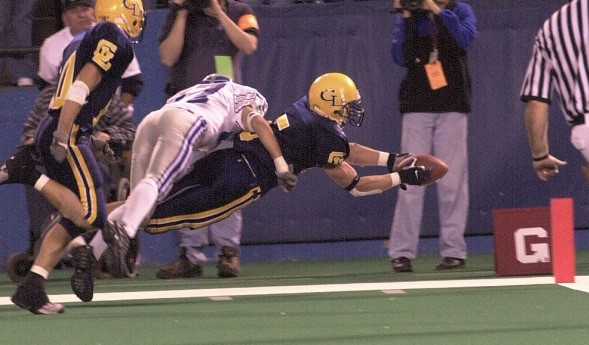
Scheduling Controversy
November 14, 2017
A dozen years ago, I asked our counterpart organizations in other states if they scheduled their schools’ regular-season varsity football games. Very few did so.
More recently, I’ve realized that I didn’t ask enough questions. It turns out that few statewide high school associations tell schools who they play each week of the regular season. However, many more give schools the group of opponents they may schedule. They place schools in leagues and/or districts and/or regions and instruct schools to schedule from among those schools only or predominantly.
I have been waiting for the tipping point where a sufficient number of high schools in Michigan are sufficiently stressed over scheduling football games that they would turn to the MHSAA to solve the problem.
I’m anticipating this might occur first among schools playing 8-player football, and that success there will lead to our assistance for 11-player schools.
One approach – the simpler solution – would work like this:
-
All 8-player schools within the enrollment limit for the 8-player tournament would be placed in two divisions on the basis of enrollment in early March. About 32 schools in each, based on current participation.
-
At the same time, each division would be divided into four regions of about eight schools.
-
In April, the schools of each region would convene to schedule seven regular season games for each school.
-
Based on current numbers, schools would still have two open weeks to fill, if they wish, for games with schools in other regions or of the other division or in neighboring states.
A second option – the date-specific solution – would provide every school its weekly schedule for all nine dates, or weeks 1 through 8, or weeks 2 through 8, depending on local preferences. This would not be difficult in concept once there is agreement on what criteria would be used and what value each criterion would have.
For example, one important criterion would be similarity of enrollment; another of great value would be proximity. Perhaps league affiliation would be a factor with some value. Perhaps historic rivalries would be another factor with a value. Then the computer spits out schedules for each school for every week for two years, home and away.
I don’t campaign for this task because, frankly, it will produce complaints and controversy. But if this organization exists to serve, then this is a service that today’s chronic complaints tell us we should begin to provide soon.
I suggest we do this for 8-player football for the 2019 and 2020 seasons (with a paper trial run for 2018). If it proves successful, we could expand the service to 11-player schools as soon after as they are satisfied with our efforts for 8-player schools.

Moment: Comets Make Last Minute Count
October 8, 2020
By John Johnson
MHSAA Director of Broadcast Properties
A hop and a wave.
That’s what it took for Grand Ledge to pull off the most unlikely of comebacks in the 2000 Division 1 MHSAA Football title game at the Pontiac Silverdome, doing what no team has ever done – scoring two touchdowns during the final minute to claim a 19-14 victory over Utica Eisenhower.
The game was your typical large-school, heavyweight fight, tied at 7-7 with less than five minutes to play when Eisenhower’s Chris Hoover broke loose for a 36-yard scoring run. But Grand Ledge bounced right back, mounting an 80-yard drive following the ensuing kickoff, capped by quarterback Matt Bohnet’s five-yard scramble to the end zone.
With just 53 seconds left on the clock, Comets coach Pat O’Keefe, already known as one of the state’s most successful baseball coaches, decided he had to gamble. Go for two.
“We were tired,” O’Keefe told the Lansing State Journal after the game. “I thought the momentum was there for us and I didn’t want to play overtime.
“We thought about it a little bit, and I saw it in the kid’s faces. I asked Matt (Bohnet) what he wanted to do and he said, ‘Let’s go for the win.’”
But the conversion play broke down. Bohnet couldn’t find an open receiver and was tackled short of the goal line.
Everyone in the Silverdome knew what was coming next. No one could have seen, however, what was going to happen.
The onside kick by Nick Sandy took a textbook hop, and Colin O’Keefe flew through the air to grab it and give the Comets new life.
Two plays later, Bohnet was scrambling again – and a wide-open Tim George was downfield waving at him. Bohnet connected with George at the 15-yard line, and after shaking off one would-be tackler, George headed for the end zone, finishing with a pylon dive that gave the Comets the lead. It was the second TD catch of the game for George.
“I caught the ball and got bumped,” George told The Detroit News. “I saw the goal line and I knew I had to get there. I didn’t even think about going out of bounds.”
You can watch the final moments of the FOX Sports Detroit coverage of the 2000 Grand Ledge-Utica Eisenhower game below.
PHOTO: Grand Ledge's Tim George dives for the winning touchdown during the final seconds of the 2000 Division 1 Final at the Pontiac Silverdome. (Photo by Gary Shook.)

